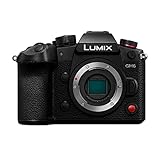
Not everybody dreams of becoming a social media star, but there’s no denying that everyone has a fair shot at it—and it’s a shot worth taking. If you’re passionate about creating video content for your social media platforms, your smartphone can serve as a reliable camera, always available in your pocket and capable of capturing decent quality footage.
However, there comes a time when you might feel the need to elevate your video quality to the next level. Perhaps you desire more cinematic-looking footage or crave better optical zoom capabilities and stabilization. Maybe you simply want to free up your phone for other tasks. In any case, this is usually the perfect opportunity to consider upgrading to a dedicated vlogging camera.
Whether you decide on an action cam designed for adventurous vloggers, a versatile mirrorless camera with interchangeable lenses, or one of the specialty vlogging options available, investing in a dedicated camera can significantly enhance your creative control and elevate the overall quality of your videos. These cameras typically feature larger sensors that capture stunning footage with improved clarity and detail.
Let’s explore some of the best vlogging cameras available today, each offering unique advantages depending on your specific needs and preferences.
Action Cams: Action cams have become an essential tool for adventure vloggers who seek durability, waterproofing, and versatility in their video recording equipment. These compact cameras are specifically designed to withstand the rigors of action-packed activities, making them ideal for capturing high-quality footage in extreme environments.
One of the standout features of action cams is their rugged build quality. Built to withstand the demands of outdoor adventures, these cameras are often shockproof and resistant to impact. This durability ensures that they can endure accidental drops, vibrations, and even minor falls, allowing vloggers to focus on their activities without worrying about damaging their equipment.
The waterproofing capability of action cams is another key feature that sets them apart. Designed to withstand water submersion without the need for additional housing, these cameras can be safely used for underwater filming, surfing, or any water-based activities. With waterproof ratings ranging from a few meters to significant depths, action cams open up a world of possibilities for vloggers who want to capture captivating footage beneath the surface.
Versatility is a defining characteristic of action cams. Their compact size and lightweight nature make them incredibly portable and easy to mount on various accessories, including helmets, handlebars, and even pets. Vloggers can experiment with different angles and perspectives, delivering unique and immersive visuals that engage their viewers. Action cams often come with an array of mounts and accessories, providing endless possibilities for capturing footage in unconventional and exciting ways.
Leading brands like GoPro and DJI have excelled in the action cam market, continuously pushing the boundaries of technological advancements. These cameras boast exceptional image quality, delivering sharp and vibrant footage that captures the essence of the adventure. They often support high-resolution video recording, including 4K and even 5.7K, enabling vloggers to showcase their adventures in stunning detail.
Action cams also prioritize ease of use. With intuitive interfaces and simple controls, vloggers can focus on their activities without being distracted by complicated settings. Many models offer features like voice control or one-touch recording, allowing vloggers to capture spontaneous moments effortlessly.
Another advantage of action cams is their exceptional image stabilization technology. Built-in stabilization systems, such as electronic image stabilization or advanced gyroscopes, compensate for camera movements and vibrations, resulting in smoother and more stable footage. This ensures that vloggers can produce professional-looking videos even in the most dynamic and fast-paced situations.
In summary, action cams have revolutionized the way adventure vloggers capture and share their experiences. With their durability, waterproofing capabilities, and versatile mounting options, these compact cameras are tailor-made for capturing high-quality footage in extreme environments. Brands like GoPro and DJI continue to innovate, providing vloggers and content creators with cutting-edge technology, exceptional image quality, and advanced stabilization features. Whether you’re scaling mountains, diving into the ocean depths, or engaging in thrilling activities, action cams are your reliable companions for documenting and sharing your adventures with the world.
Mirrorless Cameras: Mirrorless cameras have gained immense popularity among vloggers for their exceptional image quality and versatility. These cameras offer a host of features that make them a preferred choice for content creators seeking to capture professional-looking videos.
One of the key advantages of mirrorless cameras is their ability to use interchangeable lenses. This feature allows vloggers to adapt to various shooting scenarios by selecting the most suitable lens for the desired focal length and perspective. Whether it’s a wide-angle lens to capture breathtaking landscapes or a telephoto lens for detailed close-ups, the flexibility provided by interchangeable lenses empowers vloggers to achieve their creative vision with precision.
Another standout feature of mirrorless cameras is their impressive autofocus capabilities. Utilizing advanced autofocus systems, such as phase-detection or hybrid autofocus, these cameras deliver swift and accurate focus tracking, ensuring that subjects remain sharp and in focus even during fast-paced vlogging scenarios. This is particularly valuable for vloggers who frequently engage in dynamic movements or capture action-packed scenes.
In addition to exceptional image quality and autofocus, mirrorless cameras offer a wide array of advanced video features. Many models support high-resolution recording, such as 4K or even 8K, delivering stunningly detailed videos that are visually captivating. They often provide a range of frame rate options, allowing vloggers to experiment with different recording speeds for creative effect.
Mirrorless cameras also excel in low-light conditions, thanks to their larger sensors that capture more light. This capability enables vloggers to produce high-quality footage even in challenging lighting environments, such as dimly lit interiors or nighttime scenes. With improved noise performance and enhanced dynamic range, mirrorless cameras ensure that vloggers can achieve exceptional image quality across various lighting situations.
Furthermore, mirrorless cameras offer a lightweight and compact form factor, making them highly portable and ideal for vloggers who are constantly on the move. The absence of a bulky mirror mechanism found in traditional DSLR cameras contributes to their reduced size and weight, allowing vloggers to carry their equipment effortlessly and maintain their creative momentum throughout their journeys.
To cater to the specific needs of vloggers, manufacturers often equip mirrorless cameras with additional features. These may include articulating screens that can be flipped or rotated, enabling vloggers to frame themselves accurately while recording. Some models also incorporate built-in microphones or microphone input ports, facilitating high-quality audio capture.
In conclusion, mirrorless cameras have become the go-to choice for vloggers seeking exceptional image quality, flexibility, and advanced video features. With their ability to use interchangeable lenses, deliver superb autofocus performance, and provide a range of creative options, mirrorless cameras empower vloggers to produce professional-looking content across various genres and styles. Whether you’re documenting your travels, sharing educational tutorials, or showcasing your artistic endeavors, a mirrorless camera offers the versatility and image quality needed to elevate your vlogging to new heights.
Specialty Vlogging Cameras: Specialty vlogging cameras are purpose-built devices that cater to the unique requirements of vloggers. These cameras are meticulously designed to enhance the vlogging experience, offering a range of features that elevate the quality of video content creation.
One of the standout features of specialty vlogging cameras is their flip-out screens. These screens are typically articulated, allowing vloggers to monitor their framing and composition while recording themselves. Whether you’re capturing a sit-down vlog or filming on the go, the ability to see yourself in real-time ensures that you can maintain the desired framing and engage with your audience effectively.
Superior autofocus is another crucial aspect of specialty vlogging cameras. They are equipped with advanced autofocus systems that excel at quickly and accurately tracking subjects, keeping them in sharp focus even when in motion. This ensures that vloggers can confidently record without worrying about blurry footage or missed moments. The responsive autofocus also allows for smooth transitions between different subjects or scenes, enhancing the overall viewing experience for your audience.
Built-in microphones are a key component of specialty vlogging cameras, as they directly address the need for high-quality audio capture. These cameras are designed to record clear and intelligible sound, minimizing external noise interference. The built-in microphones are strategically positioned to capture audio directly from the vlogger, ensuring that their voice is the primary focus and eliminating the need for additional external microphones in many scenarios.
Canon’s PowerShot G7 X Mark III and Sony’s ZV-1 are prime examples of specialized vlogging cameras that have gained significant popularity among content creators. The PowerShot G7 X Mark III boasts a compact and portable design, making it ideal for vloggers who are always on the move. It features a flip-out touchscreen, excellent autofocus capabilities, and supports high-quality video recording, including 4K resolution. The Sony ZV-1, on the other hand, offers a purpose-built design with a vari-angle LCD screen, exceptional autofocus technology, and advanced features tailored specifically for vloggers, such as background defocus and product showcase settings.
Specialty vlogging cameras often come with additional features to enhance the vlogging experience. These may include simplified menu systems, creative shooting modes, and customizable settings to adapt to different environments and vlogging styles. The cameras are designed to offer intuitive and user-friendly interfaces, allowing vloggers to focus on their content creation rather than grappling with complex settings.
In conclusion, specialty vlogging cameras are specifically crafted to meet the demands of content creators. With their flip-out screens, superior autofocus capabilities, and built-in microphones, these cameras empower vloggers to produce high-quality video content with ease. Canon’s PowerShot G7 X Mark III and Sony’s ZV-1 are prime examples of specialized vlogging cameras that cater to the unique needs of vloggers. By investing in these purpose-built cameras, vloggers can elevate their content creation, capture engaging visuals, and deliver immersive experiences to their audience.
Each of these camera types has its own set of strengths, allowing you to find the perfect fit for your vlogging journey. Remember to consider factors such as image quality, portability, audio capabilities, stabilization, and overall versatility.
Ultimately, upgrading to a dedicated vlogging camera grants you greater creative control and opens up a world of possibilities for your content. It’s an investment that can significantly enhance the visual appeal and overall production value of your videos. So, whether you’re an aspiring social media star or simply passionate about sharing your experiences with the world, a dedicated vlogging camera is your ticket to capturing captivating footage that leaves a lasting impression on your audience.
These are some of the best vlogging cameras available today.
DJI Pocket 2
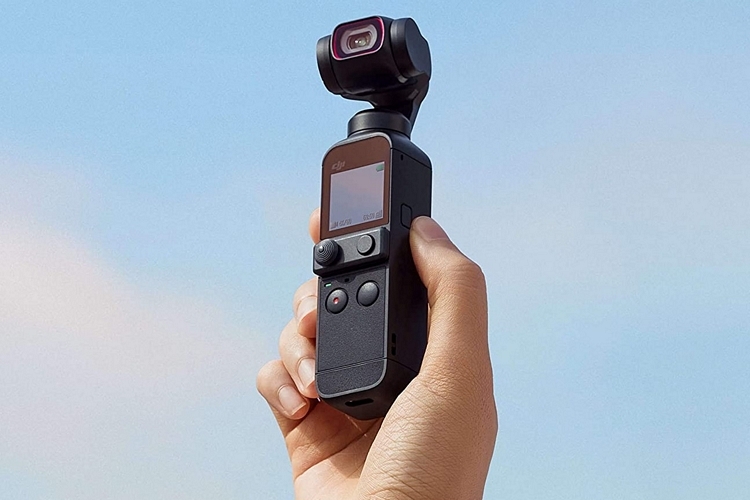
Don’t want to use your smartphone for vlogging, but don’t want to walk around with a big camera, either? DJI’s pocket-sized vlogging cam just might suit your needs, with its all-in-one gimbal camera design, compact size, and good quality footage. This second-gen version has a 1/1.7-inch sensor that can shoot 4K video at 60fps through a 20mm FOV lens, as well as 2.7K at 30fps if you want HDR activated during recording. There’s even slow-motion recording in 1080p up to 240fps. What makes this special, though, are the little features built-in, from the three-axis gimbal that stabilizes footage and the automatic face tracking to the four-mic array and support for external mics to the thumb stick manual gimbal control and scroll wheel menu navigation. Suffice to say, it’s a lot of vlogging features in a package that, literally, fits in your back pocket for absolute convenience.
- POCKET-SIZED: DJI Pocket 2 weighs only 116 g and offers up to 140 minutes of battery life. It fits...
Sony ZV-1F
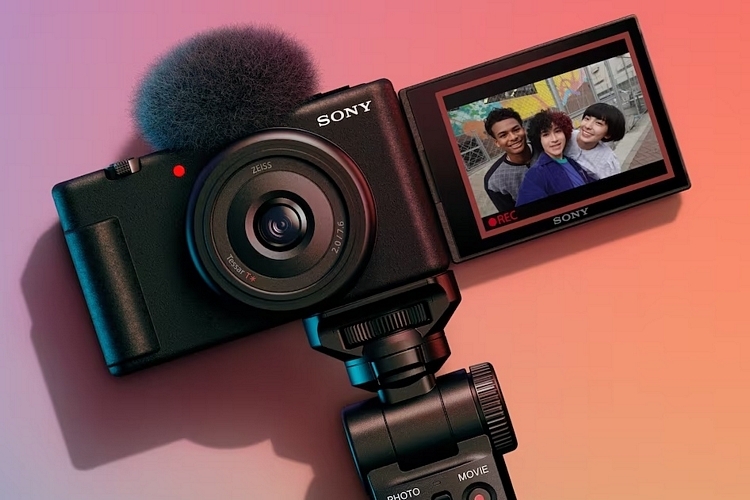
Sony has released numerous versions of its original ZV-1 camera, each one aimed at a specific segment of the vlogging community. This one, in particular, is aimed at people who do a lot of selfie footage, as it swaps out the zoom lens from the original ZV-1 for a fixed 20mm wide-angle optics. The result is a camera that’s much more capable for framing group selfies, so you can hold the camera out in front and group up with your pals without cutting out anyone from the scene. It retains all the things that make the ZV-1 so good, from the 4K 30fps video and product review mode to the powerful autofocus and 5x slow-motion to the side-articulating touchscreen and three-directional capsule mic to the bokeh switch and everything else.
- Ultra-wide 20mm* lens gets it all in the frame, even at arm’s length
Sony ZV-1
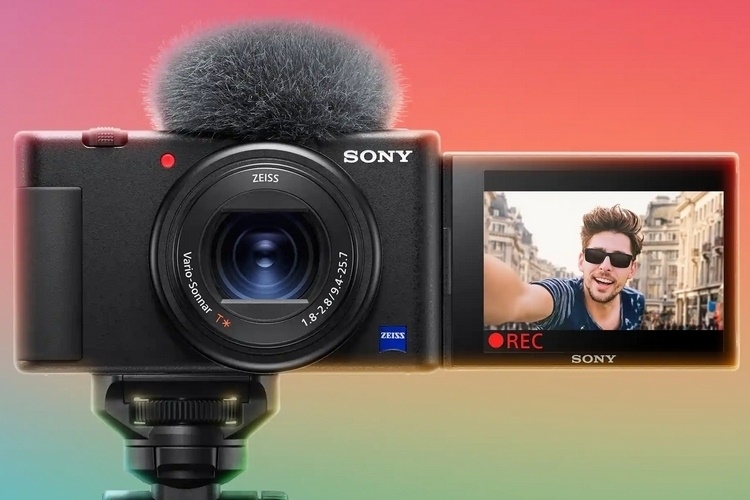
While its successor is due out in a week or so, the ZV-1 remains one of the best vlogging camera options available. And yes, that remains true after the second-gen version comes out. Why? Because it comes with mostly the same features, including a similar 1-inch sensor, all while coming in around $300 cheaper. The biggest change between this and the new version is the lens – this one uses 24-70mm f/1.8-2.8 optics, which produces better handheld shots and better zoom, although the new version does produce a significantly wider frame of view for selfie footage, which is paramount to many content creators. However, if you don’t use your vlogging camera for a lot of group selfie footage, this model delivers more than enough for all your other needs. Despite coming out in 2020, the feature set remains current, especially with Sony’s Fast Hybrid AF, an automatic exposure system, a bokeh switch setting, and a brilliant “product showcase” mode for products you want to prominently feature.
- 20.1MP stacked back illuminated 1” Exmor RS CMOS sensor w/ DRAM. Large aperture 24-70mm1 F1.8-2.8...
Nikon Z 30
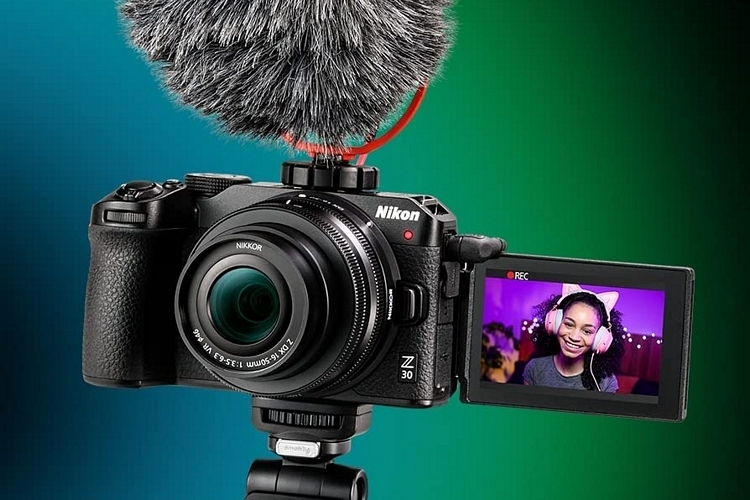
Nikon’s take on the vlogging camera is a tad bigger than Sony’s offerings. For the extra size, though, you get a much better grip that allows for steadier handheld filming. It can shoot 4K in 30fps and 1080p in 60fps, with a fast and accurate autofocus system that can detect face and eyes for humans and eyes for pets. It also has an Auto Area autofocus mode that’s great for using with product reviews and showcases. The built-in mic actually records clear and usable stereo audio, so you can get away using the built-in hardware for your sounds. It works with Nikon’s NIKKOR Z lenses, so you get a decent selection of optics to change up your shots, all while coming with a smartphone app for remotely operating the camera. And since this is based on the Z 50, it’s actually a pretty capable photography camera, too, although the feature set is clearly focused towards video creation.
- Designed for creators, vloggers and streamers: Nikon's easy to use Z 30 mirrorless 4K camera with a...
Canon EOS R50 with RF-S18-45mm Lens
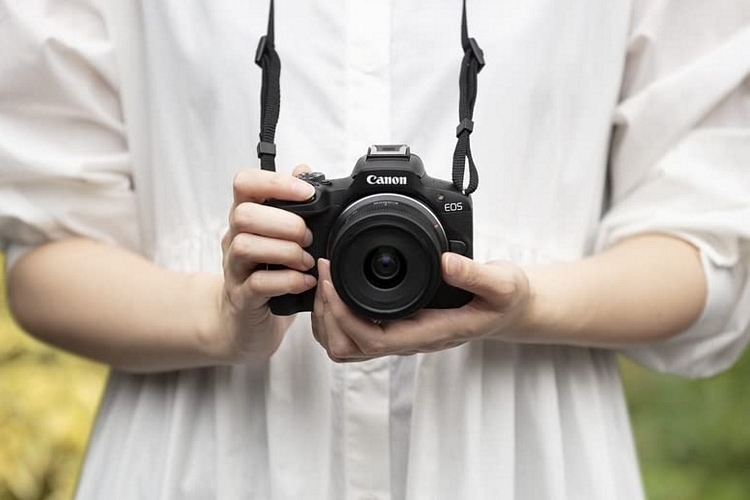
If you want a vlogging camera with interchangeable lenses, the EOS R50 mirrorless just may be the way to go. Equipped with a 24.2 megapixel sensor, it can capture 4K video at 30fps and full HD at up to 120 fps for slo-mo footage. The 4K video is oversampled from 6K, by the way, making for stellar footage quality, while Canon’s Dual-Pixel CMOS AF II is arguably one of the best in the category, with its 651 AF points, automatic subject detection, and automatic tracking for people, animals, and vehicles. Simply put, it brings some powerful video features in a really compact package. Even better, it has a number of features specifically for social media video creation, such as a 16:9 aspect ratio, a vertical movie mode, a close-up demo mode, and a number of creative filters for adding dynamic effects. We’re recommending this bundle, which comes with an 18-45mm lens that should work great for framing group selfies, although you can, of course, use it with any other lenses that work with the Canon RF mount.
- Compact, lightweight RF mount camera with a 24.2 Megapixel CMOS (APS-C) sensor and DIGIC X...
Sony ZV-1 II
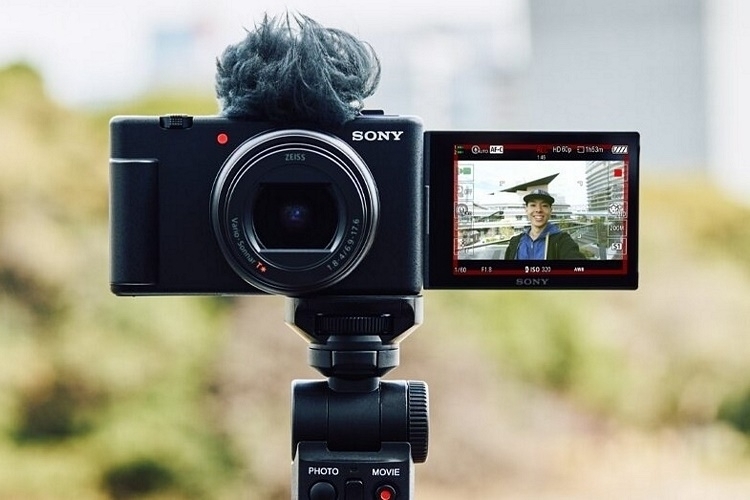
The second generation of Sony’s vlogging camera is slated to come out middle of this month and it fixes the biggest complaint about its predecessor: the lens just isn’t wide enough for selfie video, especially when you have multiple subjects in the frame. That’s why this new version comes with a versatile 18-50mm wide angle zoom lens that allows you to shoot group selfies at 18mm and zoom in for portrait shots at 50mm. It’s got all the content creation features available from its predecessor, such as the product showcase mode, the bokeh switch, and the hybrid AF system. However, the switch to a new lens also eliminated the optical stabilization from the original ZV-1, so you’ll have to rely on the electronic stabilization here or use a third-party gimbal for really stable footage. Other improvements include a three-capsule built-in mic, a Cinematic Vlog setting that gives your video a CinemaScope feel, and quick access to various settings that let you stylize your shots on the fly.
Panasonic Lumix GH6
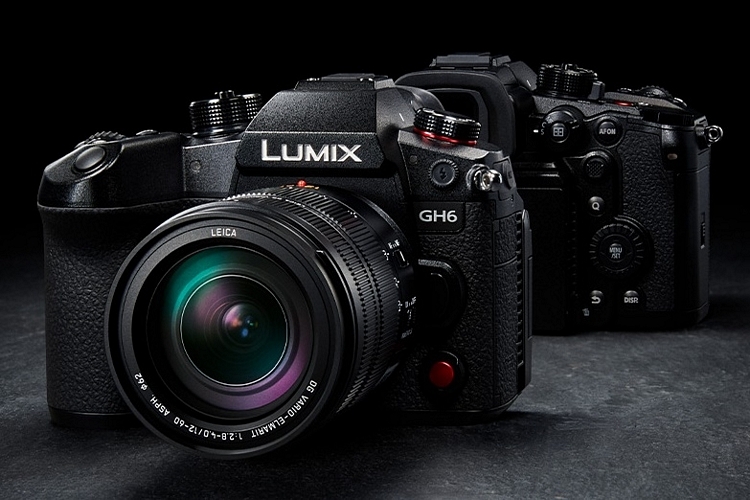
Yes, it’s probably overkill for someone looking to upgrade from a smartphone setup. However, if you want a vlogging camera that delivers high-quality filmmaking options, this is definitely the way to go. It can record 5.7K at 30fps in Pro Res HQ and 10-bit Cinema 4K at up to 120fps, so you can capture some amazing footage out of this thing, while five-axis optical image stabilization ensures you can shoot jitter-free handheld footage, no matter the situation. There’s a mind-boggling amount of customizations available for video recording, which is why this will probably overwhelm more novice users. For those who want to truly explore the possibilities with their video recordings, you’ll absolutely appreciate what this camera offers, from the contrast-based DFD autofocus and the impressive manual focusing system to the dual card slots and nearly limitless recording times to the multitude of recording modes, there’s just a lot of things here to really flesh out.
- Higher Resolution and Bit Rates than Ever Before: 25MP Sensor and Venus Engine with 100MP Hand-Held...






